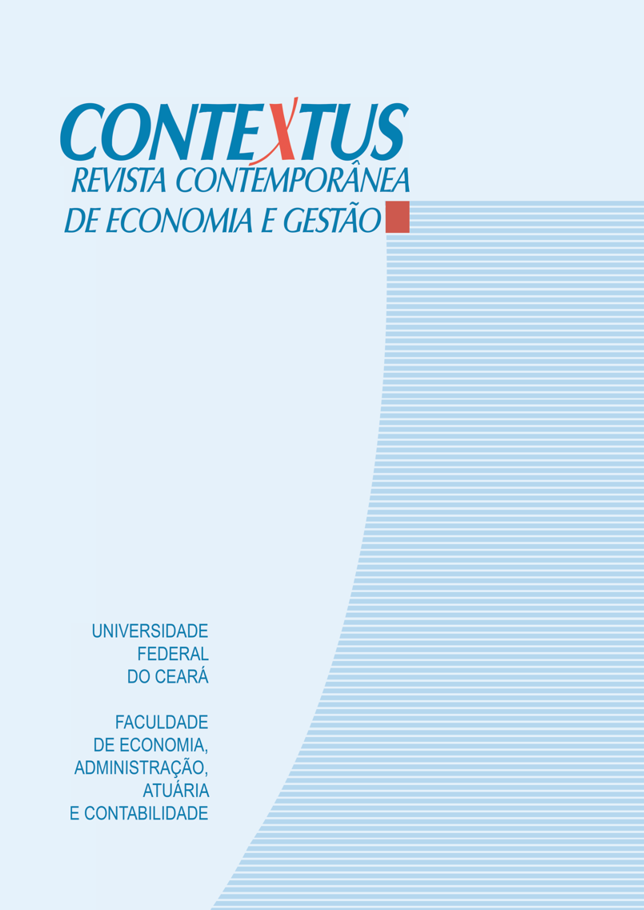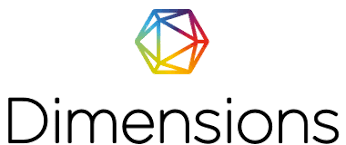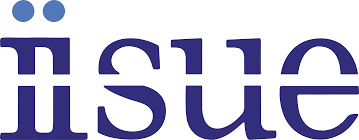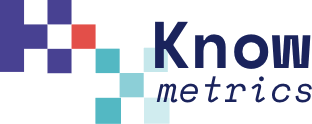Gender equality: A study of female participation in management roles in auditing firms in Brazil
DOI:
https://doi.org/10.19094/contextus.2024.85274Keywords:
gender equality, glass ceiling, female representation, big four, auditAbstract
Background: The female presence in the business world has been growing, however there are still several obstacles to achieving equal opportunities in management roles. Women have low representation in management roles, especially high-ranking ones. This study was carried out to analyze female representation in management roles in auditing firms in Brazil.
Purpose: This study analyzes female representation in leadership positions in Big Four auditing firms in Brazil between the period 2016-2023.
Method: In this sense, documentary research was carried out, inspecting the GRI Sustainability Reports of these organizations. Information about the programs developed that contribute to the rise of women in the role of leader was also sought through the companies' websites.
Results: The results demonstrated that female representation, especially in the role of partner, is still low when compared to male representation, although it has evolved in the years analyzed, progressing from 16% (2016) to 25% (2023) in the case of the firm EY and 16% (2016) to 26% (2023) at KPMG. The Big Four initiated gender equity and female talent development policies.
Conclusions: It is concluded that the Glass Ceiling is still present in these organizations and is being gradually deconstructed.
References
Ahmad, M., & Naseer, H. (2015). Gender bias at workplace: Through sticky floor and glass ceiling: A comparative study of private and public organizations of Islamabad. International Journal of Management and Business Research, 5(3), 249-260. https://sanad.iau.ir/fa/Journal/ijmbr/DownloadFile/810516
Bolton, S., & Muzio, D. (2008). The paradoxical processes of feminization in the professions: the case of established, aspiring and semi-professions. Work, employment and society, 22(2), 281-299. https://doi.org/10.1177/0950017008089105
Brighenti, J., Jacomossi, F., & Silva, M. Z. (2015). Desigualdades de gênero na atuação de contadores e auditores no mercado de trabalho catarinense. Enfoque: Reflexão Contábil, 34(2), 109-122. https://doi.org/10.4025/enfoque.v34i2.27807
Bruckmüller, S., Ryan, M. K., Rink, F., & Haslam, S. A. (2014). Beyond the glass ceiling: The glass cliff and its lessons for organizational policy. Social Issues and Policy Review, 8(1), 202-232. https://doi.org/10.1111/sipr.12006
Cambota, J. N., & Pontes, P. A. (2007). Desigualdade de rendimentos por Gênero Intra-ocupações no Brasil, em 2004. Revista de Economia Contemporânea, 11, 331-350.
https://doi.org/10.1590/S1415-98482007000200006
Capital Now (2020). Big Four: Quem são as maiores empresas de auditoria? https://www.capitalresearch.com.br/blog/investimentos/big-four/
Carneiro, L. B. (2018). Teto de vidro: um estudo sobre os fatores deste fenômeno no brasil sob a percepção das mulheres gestoras (Master's thesis). Universidade Federal do Rio Grande – FURG. Rio Grande, Rio Grande do Sul, Brasil. https://repositorio.furg.br/handle/1/7886
Carneiro, L. B., Gomes, D. G., Horz, V., & Souza, M. A. (2021). Perception of women managers about the glass ceiling breakage. Revista Produção e Desenvolvimento, 7. https://doi.org/10.32358/rpd.2021.v7.530
Cheng, H., & Wang, J. (2023). What’s in store for females after breaking the glass ceiling? Evidence from the Chinese audit market. Frontiers in Psychology, 14, 1321391. https://doi.org/10.3389/fpsyg.2023.1321391
Cohen, J. R., Dalton, D. W., Holder-Webb, L. L., & McMillan, J. J. (2020). An analysis of glass ceiling perceptions in the accounting profession. Journal of Business Ethics, 164, 17-38. https://doi.org/10.1007/s10551-018-4054-4
Crestani, J. D. S., Rodrigues, D. A., & Rodrigues, A. T. (2017). Auditoria Externa: Um Estudo Sobre Equidade De Gênero Em Empresas De Auditoria. Anais do II Congresso de Contabilidade da UFRGS. Porto Alegre, Brasil. 2.
https://www.ufrgs.br/congressocont/index.php/congresso/congressocont/paper/download/60/27
Cruz, N. G., Lima, G. H., Oliveira Durso, S., & Cunha, J. V. A. (2018). Desigualdade de gênero em empresas de auditoria externa. Revista Contabilidade, Gestão e Governança, 21(1), 142-159.
Deloitte. (2021). FY2020 Global Reporting Initiative (GRI) Index. https://www2.deloitte.com/content/dam/Deloitte/global/Documents/About-Deloitte/gx-2020-GRI-Index.pdf.
Deloitte. (2022). Construindo futuros melhores. Relatório de impactos – Brasil. Ano fiscal 2021. https://www2.deloitte.com/content/dam/Deloitte/br/Documents/about-deloitte/RelatorioImpactosDeloitteBrasilFY21.pdf.
Deloitte. (2023). Construindo futuros melhores. Relatório de impactos – Brasil. Ano fiscal 2022. https://www2.deloitte.com/content/dam/Deloitte/br/Documents/about-deloitte/Relatorio-Impactos-Deloitte-Brasil-FY2022.pdf
Deloitte. (2024a). Construindo futuros melhores. Relatório de impactos – Brasil. Ano fiscal 2023. https://www2.deloitte.com/content/dam/Deloitte/br/Documents/about-deloitte/Relato%CC%81rio%20de%20Impactos%202024%20(ref.%20FY%2023).pdf
Deloitte. (2024b). Prêmios e Reconhecimentos. https://www2.deloitte.com/br/pt/pages/about-deloitte/articles/premios-reconhecimentos.html?icid=wn_premios-reconhecimentos
Eagly, A. H., Carli, L. L., & Carli, L. L. (2007). Through the labyrinth: The truth about how women become leaders (Vol. 11). Boston, MA: Harvard Business School Press. https://doi.org/10.1108/gm.2009.05324aae.001
Ernst & Young - EY. (2017). Relatório de sustentabilidade 2016. www.ey.com.br/relatoriosustentabilidade
Ernst & Young - EY. (2018). Relatório de sustentabilidade 2017. https://assets.ey.com/content/dam/ey-sites/ey-com/pt_br/topics/corporate-social-responsibility/relat%C3%B3rio-anual-2017-/ey-relatorio-anual-2017-.pdf
Ernst & Young - EY. (2019). Relatório de sustentabilidade 2018. https://assets.ey.com/content/dam/ey-sites/ey-com/pt_br/topics/corporate-social-responsibility/relat%C3%B3rio-anual-2018/ey-relatorio-anual-2018-ey-brasil.pdf
Ernst & Young - EY. (2020). Relatório de sustentabilidade 2019. https://www.ey.com/pt_br/corporate-responsibility/relatorio-anual-2019
Ernst & Young – EY. (2020). Relatório Anual | Empoderamento feminino. https://www.ey.com/pt_br/corporate-responsibility/empoderamentofeminino
Ernst & Young - EY. (2021). Relatório de sustentabilidade 2020. https://www.ey.com/pt_br/corporate-responsibility/relatorio-anual-2020
Ernst & Young - EY. (2022). Relatório de sustentabilidade 2021. https://assets.ey.com/content/dam/ey-sites/ey-com/pt_br/topics/corporate-social-responsibility/relat%C3%B3rio-anual-2021/ey-relatorio-anual-2021.pdf
Ernst & Young - EY. (2023). Relatório de sustentabilidade 2022. https://assets.ey.com/content/dam/ey-sites/ey-com/pt_br/topics/corporate-social-responsibility/relatorio-anual-2022/ey-relatorio-anual-2022.pdf
Ernst & Young - EY. (2024). Relatório de sustentabilidade 2023. https://assets.ey.com/content/dam/ey-sites/ey-com/pt_br/topics/corporate-social-responsibility/relatorio-anual-2023/ey-relatorio-anual-integrado-2023-vf.pdf
Federal Glass Ceiling Commission. (1995). Glass Ceiling Commission - Good for Business: Making Full Use of the Nation´s Human Capital. Washington, D.C. https://ecommons.cornell.edu/bitstream/handle/1813/79348/GlassCeilingFactFindingEnvironmentalScan.pdf?sequence=1&isAllowed=y
Giuberti, A. C., & Menezes-Filho, N. (2005). Discriminação de rendimentos por gênero: uma comparação entre o Brasil e os Estados Unidos. Economia Aplicada, 9, 369-384.
https://doi.org/10.1590/S1413-80502005000300002
Glass, C., & Cook, A. (2016). Leading at the top: Understanding women's challenges above the glass ceiling. The Leadership Quarterly, 27(1), 51-63. https://doi.org/10.1016/j.leaqua.2015.09.003
Global Reporting Initiative. (2013). G4 Diretrizes para Relato de Sustentabilidade – Manual de Implementação. Amsterdam. https://sinapse.gife.org.br/download/global-reporting-initiative-g4-manual-de-implementacao
Gould, C. (1983). One Percent of the Big Eight. Working Woman.
Gri Standards. (2017). Mapping G4 to the GRI Standards. https://www.globalreporting.org/standards/media/1098/mapping-g4-to-the-gri-standards-disclosures-full-overview.pdf.
Haslam, S. A., & Ryan, M. K. (2008). The road to the glass cliff: Differences in the perceived suitability of men and women for leadership positions in succeeding and failing organizations. The Leadership Quarterly, 19(5), 530-546. https://doi.org/10.1016/j.leaqua.2008.07.011
Jaime, P. (2011). Para além das pink collars: gênero, trabalho e família nas narrativas de mulheres executivas. Civitas-Revista de Ciências Sociais, 11(1), 135-155.
https://doi.org/10.15448/1984-7289.2011.1.6811
Kpmg Auditores Independentes-KPMG. (2017). Relatório de sustentabilidade 2016. https://sustentabilidade.kpmg.com.br/html/arquivos/relatorioKPMG2016-completo.pdf
Kpmg Auditores Independentes-KPMG. (2018). Relatório de sustentabilidade 2017. https://sustentabilidade.kpmg.com.br/html/arquivos/relatorioKPMG2017-completo.pdf
Kpmg Auditores Independentes-KPMG. (2019). Relatório de sustentabilidade 2018. https://sustentabilidade.kpmg.com.br/html/arquivos/relatorioKPMG2018-completo.pdf
Kpmg Auditores Independentes-KPMG. (2020). Relatório de sustentabilidade 2019. https://sustentabilidade.kpmg.com.br/html/relatorio/KPMG2020_Completo_PT.pdf
Kpmg Auditores Independentes-KPMG. (2021a) Relatório de sustentabilidade 2020. https://sustentabilidade.kpmg.com.br/html/relatorio/KPMG2020_Relato_PT.pdf
Kpmg Auditores Independentes-KPMG. (2021b). Rumo à igualdade. KPMG Business Magazine. https://home.kpmg/content/dam/kpmg/br/pdf/2017/03/br-kpmg-business-magazine-40-capa.pdf
Kpmg Auditores Independentes-KPMG. (2022) Relatório de sustentabilidade 2021. https://midia.kpmg.com.br/site/2022/11/2021_KPMG-Brasil-Relatorio-Sustentabilidade-completo.pdf.
Kpmg Auditores Independentes-KPMG. (2023) Relatório de sustentabilidade 2022. https://assets.kpmg.com/content/dam/kpmg/br/pdf/2023/5/2022_KPMG-Brasil-Relatorio-Sustentabilidade-OIP-completo.pdf
Kpmg Auditores Independentes-KPMG. (2024) Relatório de sustentabilidade 2023. https://assets.kpmg.com/content/dam/kpmg/br/pdf/2024/02/KPMG_no_Brasil_Relatorio_de_Sustentabilidade_2023.pdf
Lavinas, L. (2001). Empregabilidade no Brasil: inflexões de gênero e diferenciais femininos. Rio de Janeiro: IPEA, 2001. https://repositorio.ipea.gov.br/handle/11058/2064
Lupu, I. (2012). Approved routes and alternative paths: The construction of women’s careers in large accounting firms. Evidence from the French Big Four. Critical Perspectives on Accounting, 23(4-5), 351-369. https://doi.org/10.1016/j.cpa.2012.01.003
Lupu, I., & Empson, L. (2015). Illusio and overwork: playing the game in the accounting field. Accounting, Auditing & Accountability Journal. https://doi.org/10.1108/AAAJ-02-2015-1984
Machado, D. G. (2012). Influência da política de remuneração dos executivos no nível de gerenciamento de resultados em empresas industriais brasileiras, estadunidenses e inglesas. (Doctoral thesis). Universidade Regional de Blumenau, Blumenau, Santa Catarina, Brasil. http://bu.furb.br/docs/TE/2012/350408_1_1.pdf
Meinhard, V. R., & Faria, J. H. (2020). Representatividade das Mulheres na Hierarquia de Empresas: Estudo de caso com base no Women's Empowerment Principles. Revista Eletrônica de Ciência Administrativa, 19(1), 33-60. https://doi.org/10.21529/RECADM.2020002
Morgenroth, T., Kirby, T. A., Ryan, M. K., & Sudkämper, A. (2020). The who, when, and why of the glass cliff phenomenon: A meta-analysis of appointments to precarious leadership positions. Psychological Bulletin, 146(9), 797. https://doi.org/10.1037/bul0000234
Morrison, A.M., & Glinow, M.A.V. (1990). Women and minorities in management. American Psychologist, 45(2), 200-208.
Nações Unidas Brasil. (2022). Objetivos de Desenvolvimento Sustentável. https://www.google.com/search?q=como+referenciar+site+abnt&rlz=1C1GCEB_enBR953BR953&oq=como+referenciar+site+&aqs=chrome.1.69i57j0i512l9.10377j0j7&sourceid=chrome&ie=UTF-8
Naguib, R., & Madeeha, M. (2023, May). “Making visible the invisible”: Exploring the role of gender biases on the glass ceiling in Qatar's public sector. Women's Studies International Forum, 98, 102723. https://doi.org/10.1016/j.wsif.2023.102723
Pear, R. (1987). Women reduce lag in earnings but disparities with men remain. New York Times, September, 4, 1. https://www.nytimes.com/1987/09/04/us/women-reduce-lag-in-earnings-but-disparities-with-men-remain.html
Pena, É. D. P. (2015). Carreira de sucesso sob a perspectiva de sócias auditoras de Big Four no Brasil. (Master’s thesis). University of São Paulo, São Paulo, São Paulo, Brasil. https://doi.org/10.11606/D.12.2018.tde-15032018-160257
Polen. (2021). Global Reporting Initiative (GRI): Tudo o que você precisa saber. https://www.creditodelogisticareversa.com.br/post/t-global-reporting-initiative-gri-tudo-o-que-voce-precisa-saber
Pricewaterhousecoopers Brasil Ltda - PwC. (2020). Relatório anual 2020. https://www.pwc.com.br/pt/publicacoes/assets/2020/relatorio_anual_20-b.pdf
Pricewaterhousecoopers Brasil Ltda - PwC. (2024a). Transparency reporte 2023. PwC Brasil. https://www.pwc.com.br/pt/estudos/servicos/auditoria/2023/Transparency-Report-2023-PT.pdf
Pricewaterhousecoopers Brasil Ltda - PwC. (2024b). PwC Brasil. Quem somos. https://www.pwc.com.br/pt/quem-somos.html#:~:text=PwC%20no%20Brasil,em%20todas%20as%20regi%C3%B5es%20brasileiras
Princípio de Empoderamento das Mulheres (WEPs). (2016). ONU Mulheres Brasil. http://www.onumulheres.org.br/referencias/principios-de-empoderamento-das-mulheres/
Richardson, R. J. (1999). Pesquisa Social: Métodos e técnicas (3 ed.). São Paulo: Atlas.
Robert, H. A. L. F. (2016). Mulheres e o Mundo Corporativo. https://www.roberthalf.com.br/sites/roberthalf.com.br/files/legacy-pdfs/robert_half_-_mulheres_e_o_mundo_corporativo.pdf
Rodrigues, M. S., Júnior, Oliveira, M. C., Marcos, I. M. A. R. A., & Rodrigues, G. R. (2017). Divulgação de informações sociais Relativas a Gênero pelas empresas Brasileiras Signatárias dos Women’s Empowerment Principles. Journal on Innovation and Sustainability RISUS, 8(4), 3-23. https://doi.org/10.24212/2179-3565.2017v8i4p3-23
Roth, L. M. (2007). Women on Wall Street: Despite diversity measures, Wall Street remains vulnerable to sex discrimination charges. Academy of Management Perspectives, 21(1), 24-35. https://doi.org/10.5465/amp.2007.24286162
Rudman, L. A., & Glick, P. (1999). Feminized management and backlash toward agentic women: the hidden costs to women of a kinder, gentler image of middle managers. Journal of Personality and Social Psychology, 77(5), 1004. https://doi.org/10.1037/0022-3514.77.5.1004
Santos, C. M. M., Tanure, B., & Carvalho, A. M., Neto. (2014). Mulheres executivas brasileiras: o teto de vidro em questão. Revista Administração em Diálogo, 16(3), 56-75. https://doi.org/10.20946/rad.v16i3.13791
Santos, M. A. D., Melo, M. C. O. L. & Batinga, G. L. (2021). Representatividade da Mulher Contadora em Escritórios de Contabilidade e a Desigualdade de Gênero na Prática Contábil: Uma Questão ainda em Debate? Sociedade, Contabilidade e Gestão, 16(1), 148-163. https://doi.org/10.21446/scg_ufrj.v0i0.30679
Smith, R. (2014). Images, forms and presence outside and beyond the pink ghetto. Gender in Management: An International Journal, 29(8), 466-486. https://doi.org/10.1108/GM-02-2014-0012
Souza, L. P., & Guedes, D. R. (2016). A desigual divisão sexual do trabalho: um olhar sobre a última década. Estudos Avançados, 30, 123-139. https://doi.org/10.1590/S0103-40142016.30870008
Souza, A.E., & Guimarães, V. N. (2000). Gênero no espaço fabril. Anais do XXIV Encontro da Associação Nacional de Pós-Graduação e Pesquisa em Administração - ENANPAD. Florianópolis, Brasil, 24. https://arquivo.anpad.org.br/eventos.php?cod_evento=&cod_evento_edicao=4&cod_edicao_subsecao=51
Steil, A.V. (1997). Organizações, gênero e posição hierárquica – compreendendo o fenômeno do teto de vidro. Revista de Administração da Universidade de São Paulo (RAUSP), 32 (3). http://rausp.usp.br/wp-content/uploads/files/3203062.pdf
Sung, S. (2022). The economics of gender in China: women, work and the glass ceiling (1 ed.). New York: Taylor & Francis. https://doi.org/10.4324/9781003307563
Topić, M. (2020). It’s something that you should go to HR about'–banter, social interactions and career barriers for women in the advertising industry in England. Employee Relations: The International Journal, 43(3), 757-773. https://doi.org/10.1108/ER-03-2020-0126
Vetter, J. (2021). The Glass Cliff – Women’s Thrive to Save Poor Performance and how to Approach it in the Workplace. Junior Management Science, 6(1), 39–59. https://doi.org/10.5282/jums/v6i1pp39-59.
Xie, Y., & Zhu, Y. (2016). Holding up half of the sky: womwn managers’ view on promotion opportunities at enterprose level in China. Journal of Chinese Human Resource Management. https://doi.org/10.1108/JCHRM-11-2015-0015
Published
How to Cite
Issue
Section
License
Copyright (c) 2024 Journal: only for the 1st publication

This work is licensed under a Creative Commons Attribution-NonCommercial 4.0 International License.
The authors, while doing the submission, accept the notice below:
We authors hold the copyright related to our paper and transfer Contextus journal the right for the first publication with a Creative Commons’ international license of the modality Attribution – Non-commercial 4.0, which in turn allows the paper to be shared providing that both the authorship and the journal’s right for initial release are acknowledged.
Furthermore, we are aware of our permission to take part in additional contracts independently for non-exclusive distribution of the version of our work published in this journal (e.g. publishing it in an institutional repository or as a book chapter), while acknowledging both the authorship and the journal’s initial publication.
We also certify that the paper is original and up to this date has not been released in any other journal, Brazilian or of another nationality, either in Portuguese or another language, as well as it has not been sent for simultaneous publication in other journals.
Last, we not only know that plagiarism is not tolerated by Contextus but also certify the paper presents the sources of passages from cited works, including those authored by ourselves.









3.png)


1.jpg)



1.jpg)


1.jpg)






.jpg)



1.jpg)

1.jpg)


1.jpg)

1.jpg)
1.jpg)
2.png)




1.jpg)
2.jpg)

1.jpg)





1.jpg)


1.jpg)
1.jpg)
